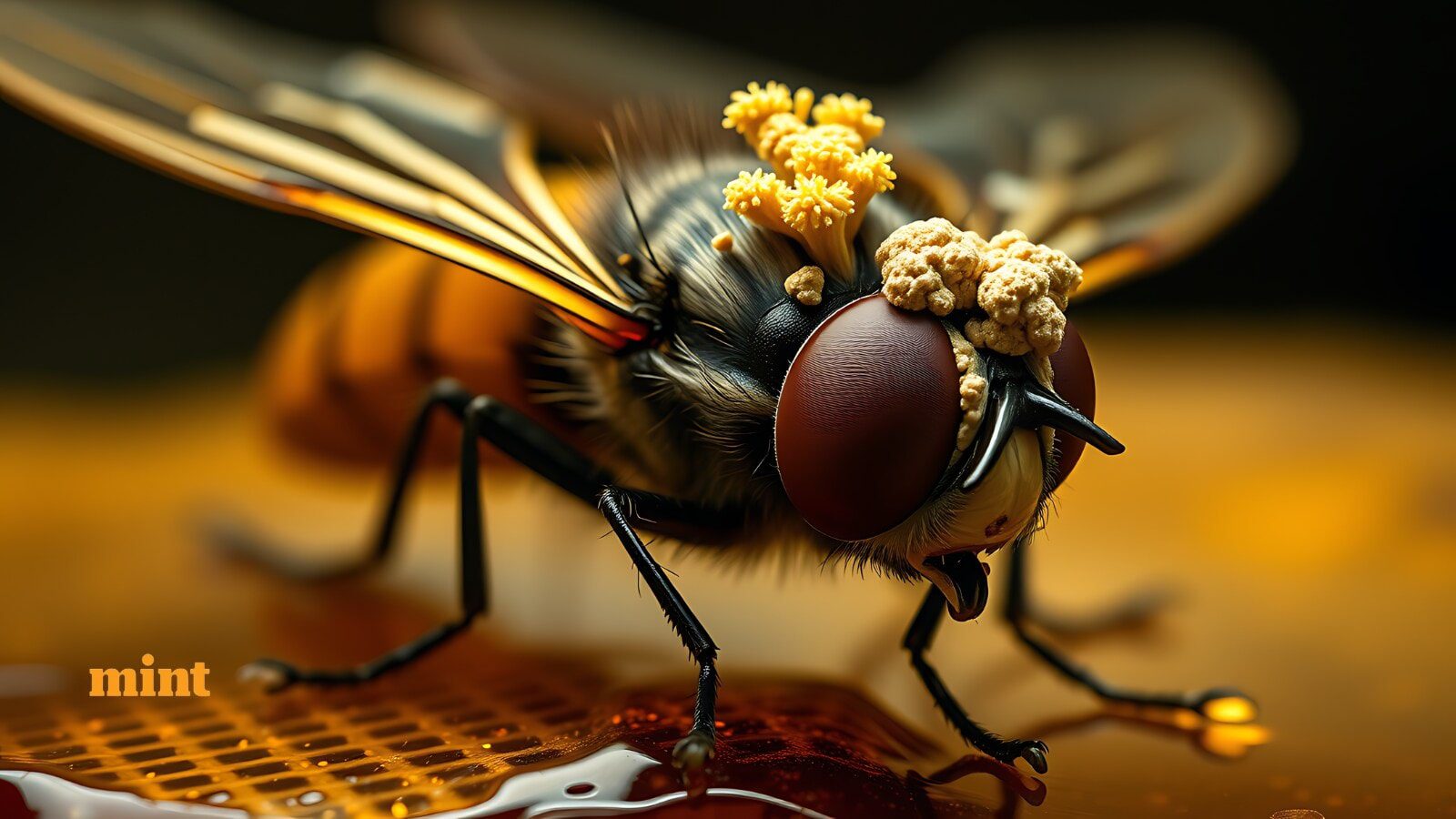Scientists find 99 million-year-old zombie fungus in very rare fossils from the dinosaur era

A piece of 99 million-year-old amber has revealed a shocking sight. It’s a fly with a zombie fungus growing from its head. Another fossil in the same amber shows a young ant infected by a similar fungus. The ant and the fly were then trapped in sticky tree sap that became amber.
These are among the oldest known examples of fungi controlling insects, killing them in the process. Chinese researchers studies the fossils by using microscopes and 3D scans.
Lead author Yuhui Zhuang from Yunnan University said such rare finds help in understanding ancient relationships between fungi and insects.
“Overall, these two fossils are very rare, at least among the tens of thousands of amber specimens we’ve seen, and only a few have preserved the symbiotic relationship between fungi and insects,” CNN quoted Zhuang as saying.
“The discovery of these two fossils suggests that terrestrial ecosystems were already very complex, and that Ophiocordyceps, in particular, may have begun to act as ‘predators’ of insects in the Cretaceous period, regulating the populations of certain groups,” Zhuang added.
Some fungi are called “zombie-ant fungi” because they can control ants’ behaviour to spread their spores. This strange idea inspired the video game and TV series The Last of Us.
Scientists believe the fungus found in a fossilised ant could be an early form of today’s zombie-ant fungi. These fungi likely controlled the ant’s body before killing it.
Such ancient parasitic fungi are very rare, so not much is known about their history. Experts say these fungi played a big role in shaping life on Earth.
Even though amber shows us many hidden species, we still only see a tiny part of the full picture. Each insect probably carried many unseen parasites, fungi or bacteria.
New fossil discovery
The new fossil discovery shows these fungi existed even during the dinosaur era, around 99 million years ago, and had already attacked insects. According to experts, they may have helped control insect populations back then.
Today, such fungi still infect many insects like ants, flies and beetles. Scientists say the fungus enters the ant’s body through a weak spot and reaches its brain to control its actions.
Interestingly, flies are rarely affected today, which makes a fossil of an infected fly very rare and exciting for researchers.






